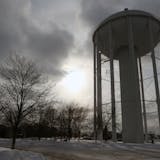Last week, the Bottineau Blue Line light-rail extension cleared a meaningful hurdle after elected officials from Hennepin County and the five cities along the line approved the $1.5 billion project's basic route, as well as stations and bridges.
Some believe this 13-mile line, which will link downtown Minneapolis to Brooklyn Park, could be the last LRT project ever built in the Twin Cities. (And still others say: Good riddance.)
But light rail remains among the options for the W. 7th Street corridor between downtown St. Paul and the Minneapolis-St. Paul International Airport and the Mall of America.
Last month, the Riverview Corridor Policy Advisory Committee voted to winnow down possible transit alternatives. In addition to light rail, options include streetcars, both arterial and dedicated bus-rapid transit, and "diesel multiple units," or DMU.
A DMU "is basically a light-rail car that runs on diesel and not electric power," says Kevin Roggenbuck, senior transportation planner for the Ramsey County Regional Railroad Authority (RCRRA).
Common overseas, DMU trains are becoming increasingly used in U.S. cities, including Philadelphia, Portland, Ore., San Diego and Dallas.
The RCRRA is paying $1.9 million to fund the study, which is also probing what route should be used — if any. So far, that's been narrowed down to W. 7th Street and a railroad spur that covers some of the area.
All of the options and routes have pros and cons. Some local businesses fear the loss of parking, should LRT, DMU or dedicated BRT be chosen. (The latter is usually defined as a limited-stop bus that uses a dedicated lane. Arterial BRT simply uses existing streets — the first BRT of this type is the Snelling Avenue line, which begins service on June 11.)


